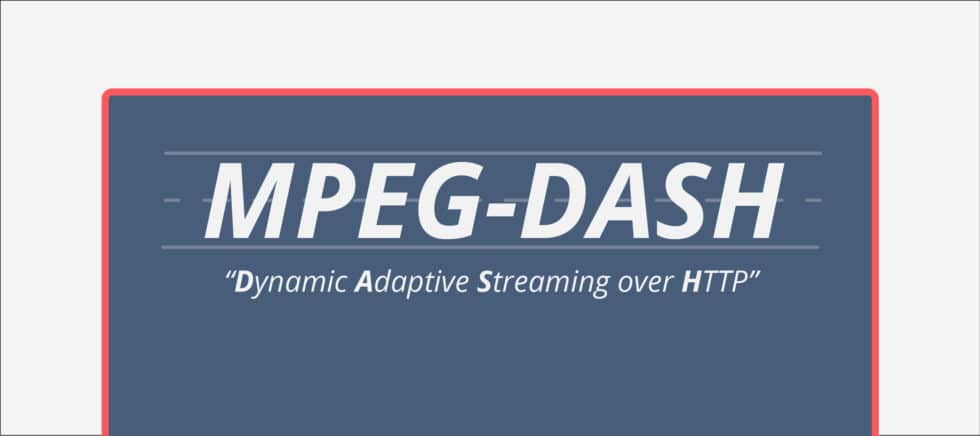
What is Dynamic Adaptive Streaming over HTTP?
Dynamic Adaptive Streaming over HTTP, also known as MPEG-DASH, is a media delivery protocol for video streaming over the Internet. Streaming protocols standardize the way video data is transferred to end-users. MPEG-DASH is the first streaming protocol to become an international standard, but the protocol is relatively new and still isn’t as widely used by broadcasters as the HTTP Live Streaming (HLS) protocol.
Who Developed MPEG Dash?
MPEG-DASH was developed by an international authority called the Moving Pictures Expert Group (MPEG) that creates various media standards for media coding. Unlike Apple’s HLS protocol, therefore, MPEG-DASH is open technology that’s codec agnostic. That means broadcasters can use a wide variety of codecs from H.264 to H.265 and VP9/10.
What’s Compatible with MPEG-DASH?
Despite compatibility with a wider range of codecs and containers, MPEG-DASH still isn’t natively supported by HTML5 video players or Apple devices. The flexibility of MPEG-DASH may have slowed adoption in the past, but as new guidelines continue to be developed the protocol could eventually overtake HLS.
Similar to other HTTP-based protocols, MPEG-DASH can be streamed from traditional HTTP web servers using standard ports (80 or 443). This differs from TCP-based protocols like RTMP, which require a dedicated streaming server and often encountered issues with firewalls blocking streams. Streaming from standard HTTP servers, therefore, is a more cost-efficient and convenient way to deliver video content to audiences.
How Does the Dash Protocol Work?
MPEG-DASH works by splitting video streams into separate segments that can be downloaded progressively rather than as a single file or stream. These segments are often sent to a content delivery network (CDN) to reduce last mile delivery to end-users. The media presentation description (MPD) is a manifest file that describes the segments available for download by video players.
Since MPEG-DASH is also an adaptive bitrate streaming (ABS) protocol, video players can choose the bitrate of each segment it downloads in real-time. Broadcasters often use cloud transcoding to create multiple renditions of the video content at various bitrates, and then video players use the MPD file when selecting bitrates. Video players use selection algorithms to determine which bitrate to download in the future based on network conditions and device processing power.
What’s the Latency of MPEG-DASH?
Many broadcasters had concerns about the latency of MPEG-DASH, which was typically at least a 30 seconds delay. Microsoft and Apple proposed the Common Media Application Format (CMAF) standard to simplify video delivery over HTTP, but the specification also helped to reduce the latency of most streams to under a few seconds. Chunked encoding is part of the CMAF specification, which involves encoding and publishing each segment as soon as it’s ready for real-time delivery.
Does Resi Support MPEG-DASH?
Using Resi’s Livestream Platform, broadcasters can use MPEG-DASH for live and on-demand video streaming. Along with its Livestream Platform, Resi offers hardware and software encoders, its own Reliable Streaming Protocol (RSP) for video ingestion, and Resi’s CDN for a complete end-to-end streaming workflow. In addition, the platform offers cloud transcoding and ABS capabilities to further improve streaming quality and performance. With Resi, broadcasters can quickly and conveniently deliver video content to audiences at scale.
